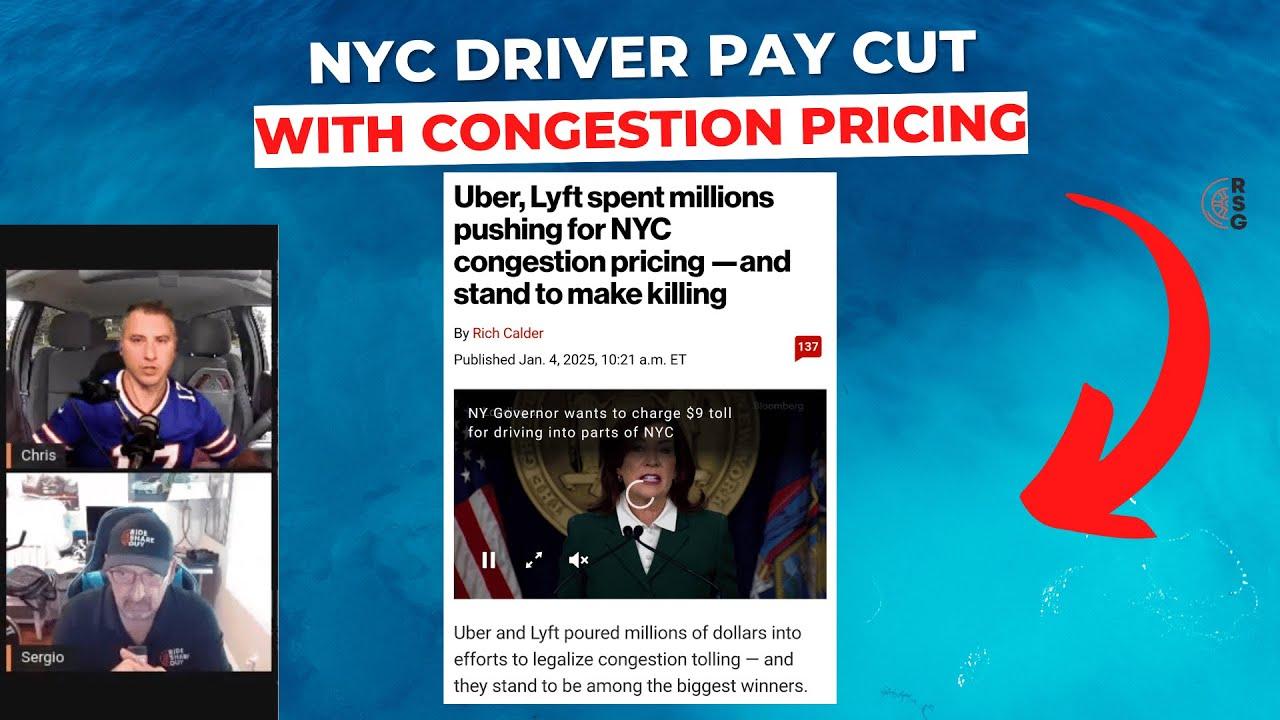Impact of Reduced Pay increase on NYC rideshare Drivers
The decision too implement a smaller pay increase for rideshare drivers in New York City has ignited concerns among the driver community about their financial stability and overall working conditions. The reduction, influenced by significant pushback from major companies like Uber and Lyft, raises questions regarding the sustainability of driver incomes in an industry plagued by fluctuating fares and rising operational costs. With many drivers already struggling to make ends meet, this shift is likely to amplify existing frustrations and may impact driver retention and motivation.
Stakeholders have voiced their worries about the potential long-term consequences of such a policy. Key implications include:
- A decrease in overall driver morale, potentially leading to higher turnover rates.
- increased difficulties for drivers in covering essential expenses such as vehicle maintenance, insurance, and fuel.
- A potential rise in tension between drivers and platform companies as dissatisfaction mounts.
Advocacy groups are calling for more robust policies that prioritize the financial well-being of drivers while still considering the sustainability of the rideshare model,highlighting the urgent need to balance the interests of drivers with those of the platforms that rely on them.

Understanding the Key Factors Behind Uber and Lyft’s Resistance
Recent discussions around driver compensation in New York City have revealed a complex interaction of market forces and regulatory challenges facing ride-hailing giants like Uber and Lyft. Both companies have expressed strong opposition to the proposed pay increases, arguing that they could lead to unsustainable operational costs. This resistance is not merely a reaction to potential financial burdens; it stems from several pivotal factors that shape their business models and strategic planning:
- Profit Margins: Increased driver pay directly impacts the bottom line. Uber and Lyft have been contending with fierce competition and rising operational expenses, making it difficult to absorb additional labor costs.
- Market Demand: The ride-hailing market is highly sensitive to pricing changes. Both companies fear that a significant rise in costs could deter riders, ultimately affecting demand and their overall market share.
- Legislative Landscape: With fluctuating regulations across different states, both firms are wary of setting precedents that could lead to more aggressive labor policies in other regions.
Moreover, the influence of technology cannot be overlooked.As ride-sharing companies increasingly leverage algorithms and data analytics to optimize their services, they are also focused on ways to automate segments of their operations. This pushes the narrative that rising wages might hinder investments in technology that could improve efficiency in the long term.Additionally, driver satisfaction and retention become critical factors; though, Uber and Lyft manage to maintain a balancing act, advocating for gamified incentives and adaptability that they argue already contribute positively to driver earnings:
- incentive Structures: The companies have developed various incentive schemes, including bonuses and surge pricing during peak times, which they argue provide drivers with opportunities to maximize earnings.
- Flexibility: Many drivers enjoy the freedom to choose their working hours, which creates an appeal that may offset some dissatisfaction with base pay.
- Career Advancement opportunities: Both companies highlight pathways for drivers to advance within their platforms, thereby increasing their earning potential.

Analysis of City Regulations and Their influence on Rideshare Earnings
The recent decision by New York City to implement a smaller pay increase for rideshare drivers highlights the complex interplay between municipal regulations and driver earnings. City officials initially aimed to enhance earnings for drivers amid rising living costs and inflation, reflecting a growing recognition of the economic pressures faced by gig workers. Though, after significant pushback from major rideshare companies like Uber and Lyft, who argued that such regulations could lead to decreased service availability and higher ride costs for consumers, the city opted for a more modest adjustment. This scenario illustrates a stark reality: the balance of power in the rideshare industry is not just between drivers and companies, but also substantially influenced by local government decisions and industry lobbying efforts.
The revised pay structure raises crucial questions about the sustainability of drivers’ incomes in a competitive market tightly regulated by city policies. key factors include:
- Driver Satisfaction: How will this smaller pay bump affect driver morale and retention in the long run?
- Market Sustainability: Will the reduced income compel drivers to shift towards other employment or alternative rideshare platforms that may offer better compensation?
- Consumer Impact: How will these regulatory changes reflect on fare prices for consumers and overall service accessibility?
As these variables unfold, riders, drivers, and regulators alike will need to stay attuned to the evolving dynamics and challenges that define the rideshare landscape in New York City.

Proposed Solutions for Balancing Driver Compensation and Company Viability
The recent adjustments to driver pay in New York City, following the pushback from major rideshare companies like Uber and Lyft, highlight the ongoing tension between fair compensation and the financial sustainability of these platforms. As cities navigate this complex terrain, several viable solutions have emerged that aim to strike a balance between ensuring drivers earn a livable wage and maintaining the economic feasibility for rideshare companies. These include:
- dynamic Pricing Models: Implementing more flexible fare structures that adjust based on demand and supply fluctuations can help increase earnings during peak hours while also encouraging drivers to work when they are needed most.
- Incentive Programs: Companies can establish bonuses for drivers who meet certain thresholds, such as completing a designated number of rides or maintaining high customer ratings, fostering an environment that rewards performance and loyalty.
- Obvious Earnings Reports: Providing drivers with clear breakdowns of their earnings, including tips and bonuses, can help them better understand how to maximize their income while building trust with the company.
- Driver Committees: Forming committees or councils that include driver representatives allows for direct feedback and discussions on compensation policies, ensuring that the voices of those most affected are heard and considered.
Additionally, collaboration between government entities and rideshare operators can lead to innovative solutions such as subsidized rides for lower-income areas or partnerships with local businesses to increase ride demand.Moreover, thorough assessments of the operational costs associated with rideshare services, including vehicle maintenance and fuel expenses, could help in re-evaluating fare structures. By engaging in open dialogues with stakeholders and exploring creative compensation frameworks, a more lasting ecosystem for both drivers and companies can be established, ultimately benefiting the entire community.
